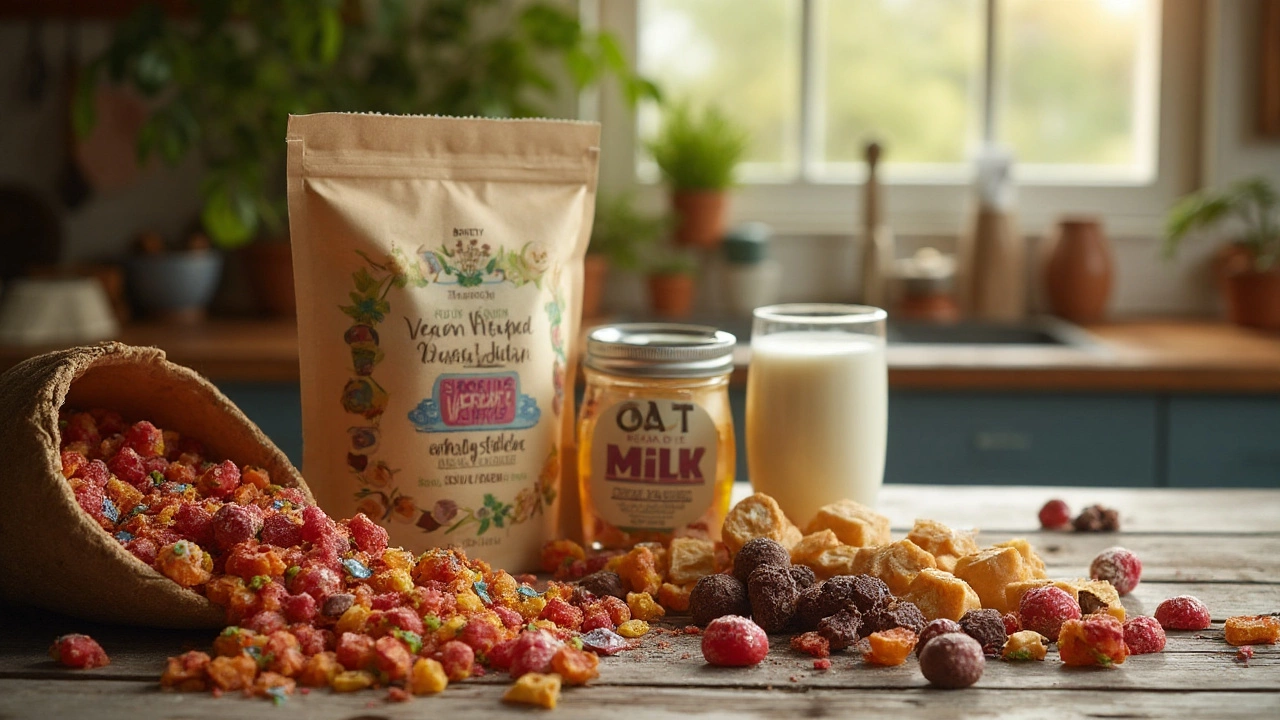
Are Vegan M&Ms Available? Complete Guide to Vegan Chocolate Candy Options
Learn if vegan M&Ms exist, what makes candy non-vegan, how to spot truly vegan chocolate, and explore top dairy-free, plant-based alternatives.
If you love candy but want to avoid animal ingredients, you’re in the right spot. Vegan candy means no gelatin, no dairy, and no honey—just sugar, fruit, nuts, or plant‑based fats. The good news? You don’t need fancy equipment or a chemistry degree to create tasty bites. A few pantry staples and a little creativity go a long way.
First, check the label. Many store‑bought sweets hide animal products in the fine print. Look for gelatin, whey, casein, or honey. If you can’t find the info, assume it’s not vegan. That’s why making your own candy is the safest bet.
Here are three quick recipes that cover chocolate, fruit, and nutty cravings.
1. Simple Vegan Chocolate Bark – Melt 200 g of dairy‑free dark chocolate (70% cocoa or higher) over a low‑heat water bath. Stir in a handful of toasted almonds, dried cranberries, and a pinch of sea salt. Spread the mix on a parchment sheet, let it cool, and break into shards. You get a crunchy, sweet snack in under 20 minutes.
2. Fruit‑Infused Gummy Bears – Blend 1 cup of fruit juice (like mango or orange) with 2 tbsp of agar‑agar powder. Bring the mixture to a boil, then pour into silicone bear molds. Chill for an hour, and you’ve got chewy, colorful gummies without any gelatin.
3. Peanut Butter Fudge – Combine 1 cup of natural peanut butter, ½ cup of coconut oil, ¼ cup of maple syrup, and a dash of vanilla extract. Heat until smooth, then pour into a lined pan. After it sets in the fridge (about 2 hours), cut into bite‑size squares. The result is a creamy, salty‑sweet treat that feels indulgent.
Each recipe uses ingredients you likely already have, so there’s no need for a trip to a specialty store. Plus, you control the sugar level and avoid any hidden allergens.
Use the right sweeteners. Coconut sugar, maple syrup, and agave work well for most candy. They add flavor without a gritty texture.
Mind the temperature. Sugar candy, like caramel or toffee, needs a precise heat (around 340°F/170°C). A candy thermometer takes the guesswork out of it. If you don’t have one, watch for a deep amber color and a thickening consistency.
Choose the right thickener. Agar‑agar replaces gelatin for gummy textures, while pectin works for fruit jellies. Both are plant‑based, but they behave differently. Agar sets quickly at room temperature; pectin needs sugar and acid to firm up.
Store correctly. Most vegan candies keep best in an airtight container. Chocolate bark stays fresh in a cool, dark spot, while gummy bears benefit from a fridge if you like a firmer bite.
Don’t be afraid to experiment. Swap cocoa butter for coconut oil in chocolate, or add a splash of espresso to caramel for a mocha twist. The only limit is your taste buds.
Whether you’re making a batch for a party or just satisfying a late‑night craving, vegan candy can be simple, cheap, and unbelievably satisfying. Grab a bowl, follow one of the recipes above, and enjoy a sweet treat that’s kind to animals and delicious for you.

Learn if vegan M&Ms exist, what makes candy non-vegan, how to spot truly vegan chocolate, and explore top dairy-free, plant-based alternatives.

Unwrap the truth about which major candies are vegan. Explore facts, surprising picks, and expert tips to satisfy your sweet tooth, plant-based style!

Wondering if your favorite colorful candies fit into a vegan lifestyle? This article digs into what makes M&M's potentially non-vegan, explores the ingredients list, and offers alternative treats for those who follow a plant-based diet. You'll learn why some M&M varieties might be off the table and discover tasty vegan options to satisfy that sweet craving. Read on to ensure your candy bowl stays cruelty-free.